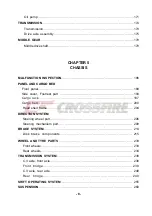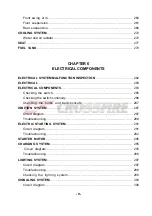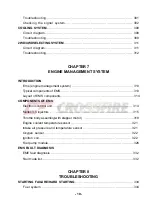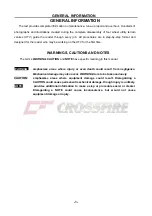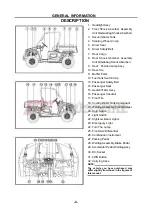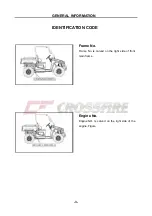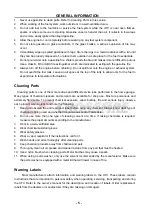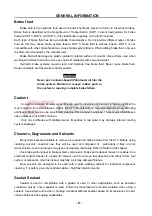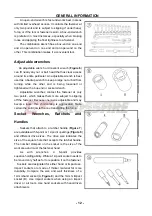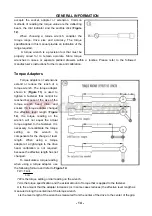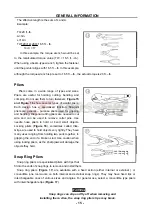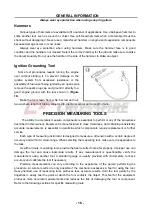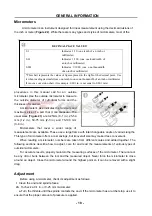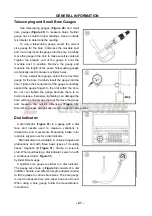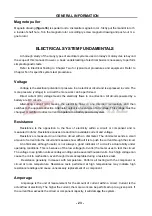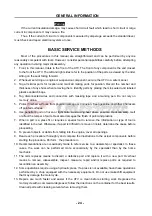
GENERAL INFORMATION
- 9 -
Brake fluid
Brake fluid is the hydraulic fluid used to transmit hydraulic pressure (force) to the wheel brakes.
Brake fluid is classified by the Department of Transportation (DOT). Current designations for brake
fluid are DOT 3, DOT 4 and DOT 5, this classification appears on the fluid container.
Each type of brake fluid has its own definite characteristics. Do not intermix different types of brake
fluid as this may cause brake system failure. DOT 5 brake fluid is silicone based. DOT 5 is not
compatible with other brake fluids may cause brake system failure. When adding brake fluid, only use
the fluid recommended by the manufacturer.
Brake fluid will damage any plastic, painted or plated surface it contacts. Use extreme care when
working with brake fluid and remove any spills immediately with soap and water.
Hydraulic brake systems require clean and moisture free brake fluid. Never reuse brake fluid.
Keep containers and reservoirs properly sealed.
WARNING
Never put a mineral-based (Petroleum) oil into the
brake system. Mineral oil causes rubber parts in
the system to causing complete brake failure.
Coolant
Coolant is a mixture of water and antifreeze used to dissipate engine heat. Ethylene glycol is the
most common from of antifreeze. Check the UTV Manufacturer’s recommendations when selecting
antifreeze. Most require one specifically designed for aluminum engines. There types of antifreeze
have additives that inhibit corrosion.
Only mix antifreeze with distilled water. Impurities in tap water may damage internal cooling
system passages.
Cleaners, Degreasers and Solvents
Many chemicals are available to remove oil, grease and other residue from the UTV. Before using
cleaning solvents, consider how they will be used and disposed of , particularly if they are not
water-soluble. Local ordinances may types of cleaning chemicals. Refer to Safer in this chapter.
Use brake parts cleaner to brake system components. Brake parts cleaner leaves no residue. Use
electrical contact cleaner is a powerful solvent used to remove fuel deposits and varnish from fuel
system components. Use this cleaner carefully, as it may damage finishes.
Most solvents are designed to be used with a parts washing cabinet for individual component
cleaning. For safety, use only nonflammable or high flash point solvents.
Gasket Sealant
Sealant is used in combination with a gasket or seal. In other applications, such as between
crankcase halves, only a sealant is used. Follow the manufacturer’s recommendation when using a
sealant. Use extreme care when choosing a sealant different sealant based on its resistance to heat,
various fluids and its sealing capabilities.



